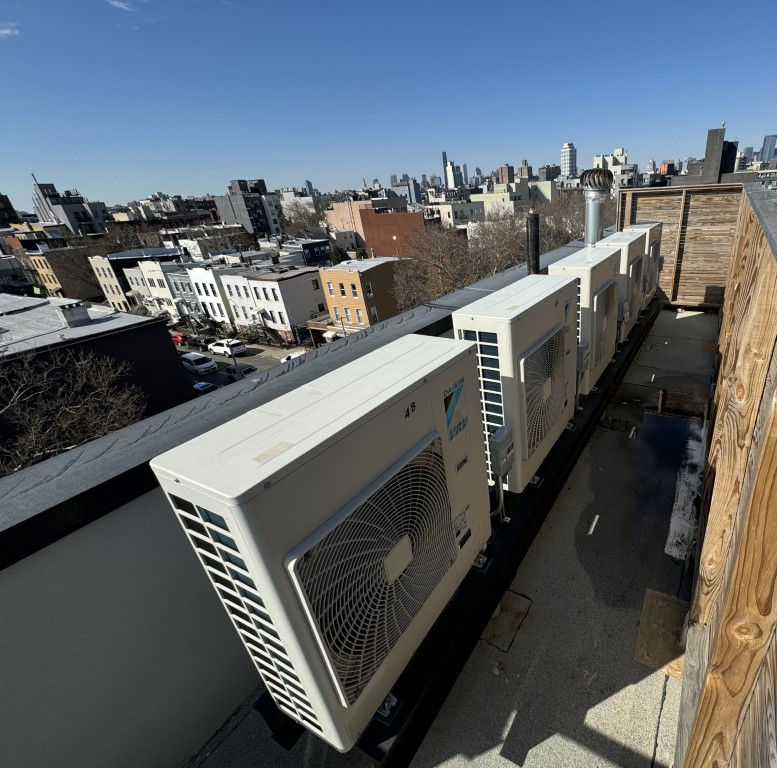HVAC Leak Detection, Refrigeration Systems & Regulatory Requirements
- Built Engineers
- 11 minutes ago
- 3 min read
Proper design, installation, and maintenance of HVAC and refrigeration systems are critical not only for comfort and process cooling but also for safety, energy efficiency, and environmental protection. Among the many technical considerations for HVAC systems, leak detection and regulatory compliance have become central issues—especially in light of evolving refrigerant regulations and system safety standards.
Here we cover key aspects of refrigeration systems, including refrigerant system classification, equipment location requirements, refrigerant protection measures, and piping requirements—all within the framework of modern code and industry standards.

Refrigerant System Classification and Types
Refrigeration systems are categorized based on the type of refrigerant used, system charge, and the level of risk posed to occupants in case of a leak. The ASHRAE Standard 15, ASHRAE Standard 34, and local codes based on the International Mechanical Code (IMC) guide the classification and application of refrigerant systems.
Refrigerant Safety Groups
ASHRAE Standard 34 classifies refrigerants into safety groups based on toxicity (Class A: lower toxicity; Class B: higher toxicity) and flammability (1 = no flame propagation, 2L = lower flammability, 2 = flammable, 3 = highly flammable). For example:
R-410A: A1 – non-toxic, non-flammable
R-134a: A1 – non-toxic, non-flammable
R-32: A2L – low toxicity, lower flammability
Ammonia (R-717): B2L – toxic, lower flammability
System Classification (Per ASHRAE 15 & IMC)
Refrigeration systems are classified into:
Direct Systems: Refrigerant comes into direct contact with the conditioned space (e.g., DX split systems).
Indirect Systems: A secondary fluid (like chilled water) transfers heat; refrigerant remains isolated (e.g., chillers).
High-probability Systems: More likely to leak into occupied spaces.
Low-probability Systems: Contained within sealed equipment or machinery rooms.
The classification affects where the system can be installed and what safety controls must be in place.
System Location Requirements
The location of refrigeration systems is governed by local building codes such as IMC, IBC, and ASHRAE 15, with special attention to occupancy types and refrigerant charge.
Occupied Spaces
Systems with high-probability of refrigerant leakage and those using refrigerants in large quantities may be restricted from installation in occupiable spaces unless additional safeguards are used, such as leak detection and ventilation.
Machinery Rooms
When refrigerant quantities exceed threshold limits based on the refrigerant type and room volume, the system must be installed in a machinery room with:
Continuous or demand-controlled ventilation
Refrigerant detection alarms
Emergency exhaust systems
Proper signage and access controls
Electrical equipment complying with NEC hazardous location classifications (depending on refrigerant flammability)
Regulatory Requirements for Refrigerant Protection
Safety and environmental regulations now heavily influence how refrigerant systems are designed and managed.
IMC & IBC Requirements
Refrigerant quantities are limited based on occupancy classification (e.g., assembly, institutional, residential).
Leak detection and alarm systems are required when threshold limits are exceeded.
Proper venting, pressure relief, and emergency control measures must be in place.
EPA Regulations (Section 608 of the Clean Air Act)
Mandatory refrigerant leak repair thresholds: ≥50 lbs. systems must be monitored and repaired if leak rate exceeds set limits (e.g., 10% for comfort cooling).
Technician certification is required for handling refrigerants.
Recordkeeping and reporting are required for large systems and leak repairs.
HVAC Refrigerant Leak Detection Systems
Leak detection systems are vital for occupant safety, especially for systems installed in enclosed spaces or using flammable or toxic refrigerants.
Key Requirements:
Must trigger alarms and ventilation systems automatically
Must be installed at low points (for heavier-than-air refrigerants) or high points (for lighter gases)
Shall comply with UL 60335-2-40 (for residential and light commercial units)
Required in machinery rooms, equipment enclosures, and in any area where refrigerant concentration can exceed permissible exposure limits
Refrigerant Piping Requirements
Refrigerant piping must be designed and installed per IMC Section 1107, ASHRAE 15, and manufacturer’s recommendations to ensure safety and performance.
Design Considerations:
Piping must be rated for the pressure of the refrigerant (consider both operating and relief pressures).
Adequate support spacing to minimize vibration and stress
Protection against physical damage, corrosion, and UV exposure
Insulation to prevent condensation and energy loss
Pressure relief piping must be routed outdoors and terminate safely
Valves and isolation devices must be accessible for service and shutoff
Flammable Refrigerants (A2L/A3):
Additional labeling and markings required
Separation from ignition sources
Use of UL-listed components compatible with refrigerant type
As refrigerant technology evolves and codes adapt to new refrigerant blends and environmental concerns, HVAC engineers, designers, and contractors must remain vigilant. Proper classification of systems, placement of equipment, and compliance with both safety and environmental regulations are not just legal requirements—they’re critical for long-term system performance and occupant safety.
BUILT Engineers provides comprehensive engineering services to support HVAC and refrigeration system design, code compliance, and regulatory strategy. We assist with refrigerant system classification, machinery room planning, leak detection integration, and piping design. If you're navigating a challenging occupancy condition, or simply want peace of mind that your systems meet today's safety and performance standards, we’re here to help. Reach out to us to learn more about how we can support your next project.



Комментарии